Explore topic-wise InterviewSolutions in .
This section includes InterviewSolutions, each offering curated multiple-choice questions to sharpen your knowledge and support exam preparation. Choose a topic below to get started.
| 1051. |
A certain number of persons sit in a row adjacent to each other. Some of them like different fruits and others like different flowers. Six persons sit between the one who like orange and the one who like banana. The one who likes lily sit third to the left of the one who likes banana. two persons sit between the one who likes lily and the one wholikes lavender, who is not a neighbor of the one who likes orange. only one person sit to the right of the right of the one who like lavender. No one sit to the right of the one who likes orange. note : The one who likes fruits faces south and the one who likes flowers face north. How many person sit between banana and lavender ? |
|
Answer» (i) ELEVEN 
|
|
| 1052. |
Anil starts walking in east direction and after travelling some distance he took a right turn and then a left turn followed by another left turn. Now he again took a right turn and finally took a left turn. In which direction is anil walking. |
|
Answer» south |
|
| 1053. |
Bihar Chief Mininste Nitish Kumaron Monday launched a State-widecampaignas oneof themajorstep for women empowermentto abolish dowry, statedit asmajor drawback of our society. Is this decision sufficientto get rid from this custom, whichis runningfromlong timein Bihar. Whichof the followingwill be suited option to get rid from dowry with theirexplanation ? |
|
Answer» Yes, as Stategovt. Islauchingstate WIDE campaign, it will impactthe wholesociety of Bihar. |
|
| 1054. |
If the digits in the number 25673948 are arranged in ascending order from left to right, what will be the sum of the digits which are fourth from the 'right and third fro,m the left in the new arrangement? |
|
Answer» 10 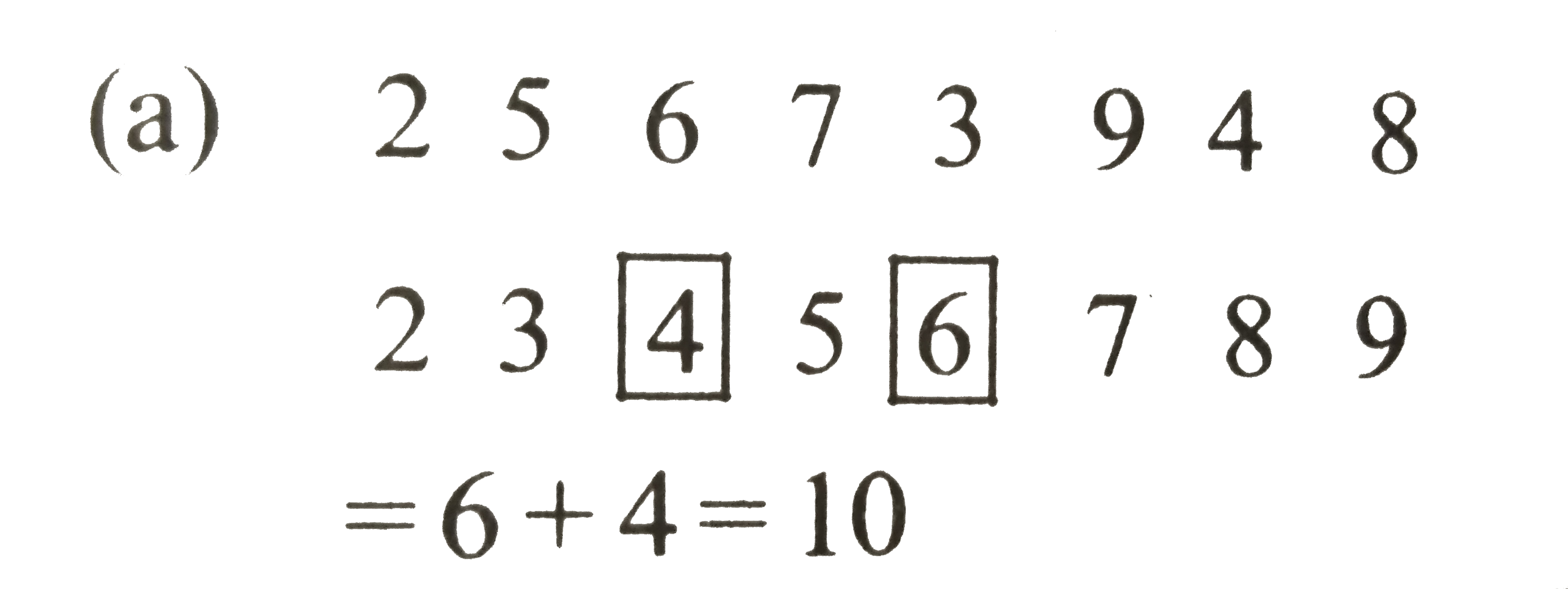
|
|
| 1055. |
Statements: Some milk is white Some white is water. Some water is milk Conclusions: I. Some milk which is white is water II. Some water is neither milk nor white |
|
Answer» If only CONCLUSION I follows 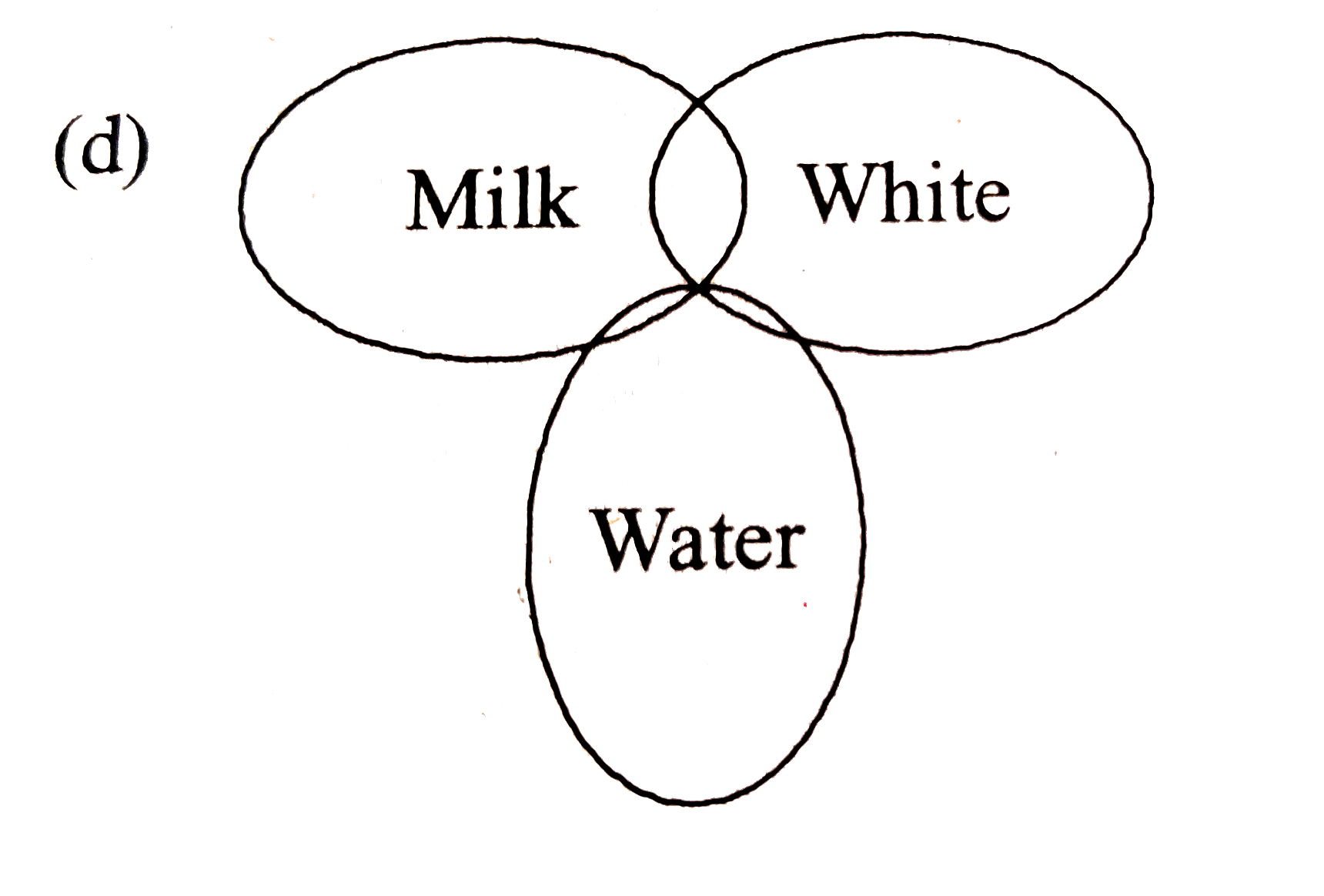 So, Neither I nor II FOLLOW |
|
| 1056. |
'P%Q' means 'P is not smaller than Q'. 'P**Q' mensa 'P is neither greater than nor equal to Q'. 'P deltaQ' means 'P is neither smaller than nor equal to Q'. 'P$Q' menas 'P is neither greater than nor smaller than Q'. 'P© Q' means 'P is not greater than Q'. Now, in each of the following questions assuming the given statements to be true. find which of the two conclusions I and II given below them is/are definitely true. Given answer Statements: W(c) B, NdeltaB, N (c) F Conclusions: I. F deltaB II. W**N |
|
Answer» if only CONCLUSION I is true. `T**RimpliesTltR` `R%FimpliesR gtF` F@`KimpliesF=K` Therefore, `B ge T lt R gt F=K` Conclusions I. `B%RimpliesV gt R:` Not True II. `F**TimpliesF lt T: ` Not True III. `R%KimpliesR gtK:` True IV. `K**TimpliesK lt T:` Not true |
|
| 1057. |
Statements: Some desks are chairs Some chairs are seats No seat is a table Conclusions: I. All desks can never be tables II. Some chairs are definitely not tables |
|
Answer» If only CONCLUSION I follows 
|
|
| 1058. |
Statements: All flowers are toyes Some toys are trees Some angles are trees Conclusions: I. Some angles are toys II. Some trees are flowers III. Some flowers are angles |
|
Answer» Only I follows 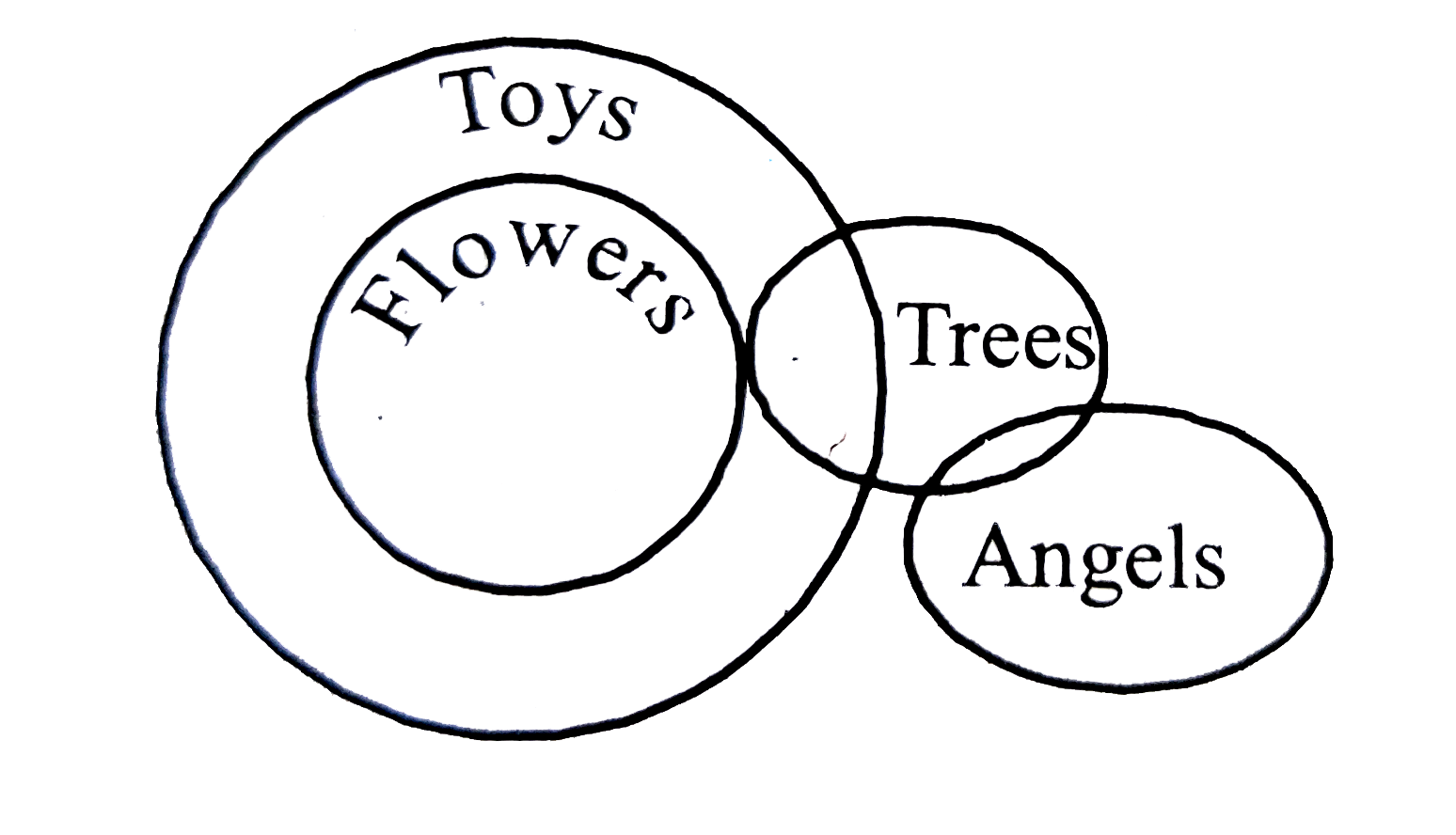 Conclusion I. FALSE II. False III. False HENCE none follows |
|
| 1059. |
Input: and band land hand hind lack job Step I: hind and band lack land hand job Step II : hind band land job and lack hand Step III : hind and lack band hand land job Step IV: land band and job hand lack hind Step V : hand land band lack and job hind Step VI: hand band and hind land lack job and so on. As per the rule followed in the above steps, find out the appropriate step for the given input or vice versa in the following questions. If Step IV of an input is "he is to do what her observe". Which of the following would definitely be the input? |
|
Answer» to is he what observe her do 
|
|
| 1060. |
Input: and band land hand hind lack job Step I: hind and band lack land hand job Step II : hind band land job and lack hand Step III : hind and lack band hand land job Step IV: land band and job hand lack hind Step V : hand land band lack and job hind Step VI: hand band and hind land lack job and so on. As per the rule followed in the above steps, find out the appropriate step for the given input or vice versa in the following questions. If step III of an input is "when then men can how are you". What would be the input? |
|
Answer» (A) then can are howwhen MEN you 
|
|
| 1061. |
(A)The Government has recently lifted ban on import of sugar for selling in the retail market.(B)The prices of sugar in the retail market have stabilized after a considerable gap. |
|
Answer» if statement (A) is the cause and statement (B) is its effect |
|
| 1062. |
P 7 3 G # R E $ 4 F K 1 U % W H 2 N I 5 B Q Y 6 @ H M beta 8 V D Which of the following is seventh to the left of twelfth from the right end of the above arrangement? |
|
Answer» I = 19TH from the RIGHT end in the given arrangement. ELEMENT at 19th from the right end= U |
|
| 1063. |
Statements: All desks are tables All tabels are chairs Some chairs are sofas Conclusions: I. Some sofas are desks II. Some chairs are desks III. Some tables are desks |
|
Answer» Only I follows 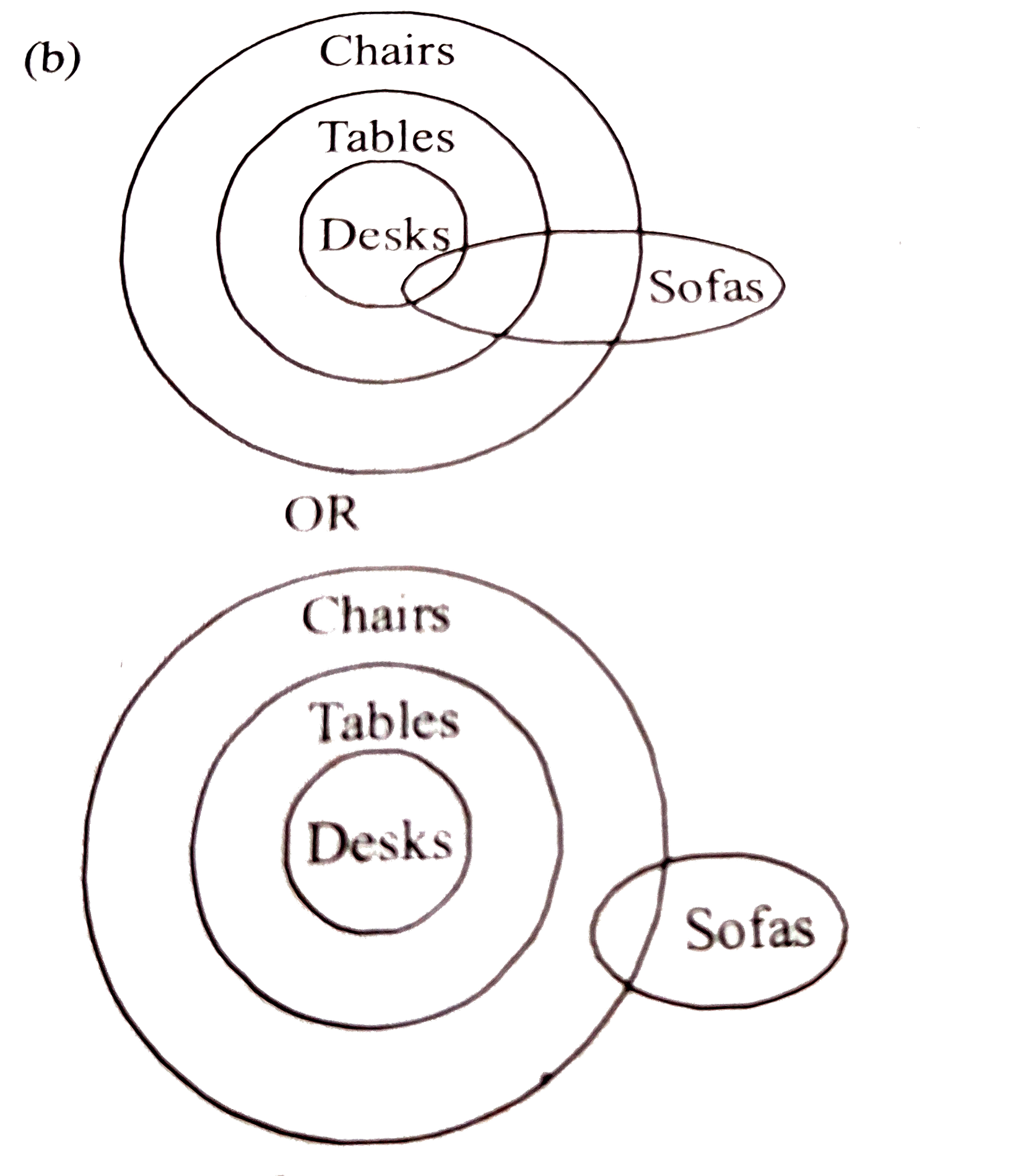 Conclusion I. FALSE II. True III. True. CONVERSION of the FIRST premise |
|
| 1064. |
I B @ K 9 D © 5 2 T $ M 4 E J #U R 1 A deltaK 5 W 6 % F Q 7 H P 8Z How many such consonants are there in the above arrangement, each of which is immediately preceded by a number and immediately followed by a symbol |
Answer» Solution :Looking SEQUENCE : There are two |
|
| 1065. |
In a toy exhibition, a machine processes a given input by the following rule. Participants are shown one by one till it reaches its last step. Following is an illustration of the working of this machine. Input: sui me ato fezen u no Step I : fe sui me no ato zen u Step II : no fe sui u me ato zen Step III : u no fe zen sui me ato Step IV: zen u no ato fe sui me Step V : ato zen u me no fe sui and so on. Now attempt the questions given below. If the Step Ill ofan input is 'lo men chi from yet as know', which of the following would be its input? |
|
Answer» 1.Data inadequate In order to make THINGS easier, LET us represent the words digitally from 1 to 7.  Step III: lo men chi from yet as know 6 7 4 5 1 2 3 Input: 1 2 3 4 5 6 7 yet as know chi from lo men |
|
| 1066. |
In a toy exhibition, a machine processes a given input by the following rule. Participants are shown one by one till it reaches its last step. Following is an illustration of the working of this machine. Input: sui me ato fezen u no Step I : fe sui me no ato zen u Step II : no fe sui u me ato zen Step III : u no fe zen sui me ato Step IV: zen u no ato fe sui me Step V : ato zen u me no fe sui and so on. Now attempt the questions given below. Which 'Of the following correctly describes the 'machine logic' in generating various steps based on the given input? |
|
Answer» Each step is generated on random BASIS. In order to make things easier, let us represent the words digitally from 1 to 7.  The rule is given above. |
|
| 1067. |
In a toy exhibition, a machine processes a given input by the following rule. Participants are shown one by one till it reaches its last step. Following is an illustration of the working of this machine. Input: sui me ato fezen u no Step I : fe sui me no ato zen u Step II : no fe sui u me ato zen Step III : u no fe zen sui me ato Step IV: zen u no ato fe sui me Step V : ato zen u me no fe sui and so on. Now attempt the questions given below. What will be the step IV for the following input? Input : may sen to cry if not hell |
|
Answer» cry may SEN to ifnot hell In order to make things easier, let us represent the words digitally from 1 to 7.  Input : may sen to cry if not hell Step 4 : 5 6 7 3 4 1 2 Step 4 : if not hell to cry may sen |
|
| 1068. |
In a toy exhibition, a machine processes a given input by the following rule. Participants are shown one by one till it reaches its last step. Following is an illustration of the working of this machine. Input: sui me ato fezen u no Step I : fe sui me no ato zen u Step II : no fe sui u me ato zen Step III : u no fe zen sui me ato Step IV: zen u no ato fe sui me Step V : ato zen u me no fe sui and so on. Now attempt the questions given below. If the Step V of an input is 'so cd rom lay is nor it', which of the following would be its Step II? |
|
Answer» is nor it rom LAY so cd In ORDER to make things easier, let us REPRESENT the words digitally from 1 to 7.  StepV: so cd rom lay lS nor it 3 5 6 2 7 4 1 Step II: 7 4 1 6 2 3 5 is nor it rom lay so cd |
|
| 1069. |
In a toy exhibition, a machine processes a given input by the following rule. Participants are shown one by one till it reaches its last step. Following is an illustration of the working of this machine. Input: sui me ato fezen u no Step I : fe sui me no ato zen u Step II : no fe sui u me ato zen Step III : u no fe zen sui me ato Step IV: zen u no ato fe sui me Step V : ato zen u me no fe sui and so on. Now attempt the questions given below. Which of the following steps would read as 'not you only say wise yet are' for the input 'say not you are only wise yet'? |
|
Answer» III In order to make things easier, let us represent the words digitally from 1 to 7.  Input:. SAY not you are only wise yet 1 2 3 4 5 6 7 ARRANGEMENT: not you only say wise yet are Step VI: 2 3 5 1 6 7 4 |
|
| 1070. |
Statements: All vacancies are jobs. Some jobs are occupations Conclusions: I. All vacancies are occupations II. All occupations being vacancies is a possibility. |
|
Answer» If only CONCLUSION I follows 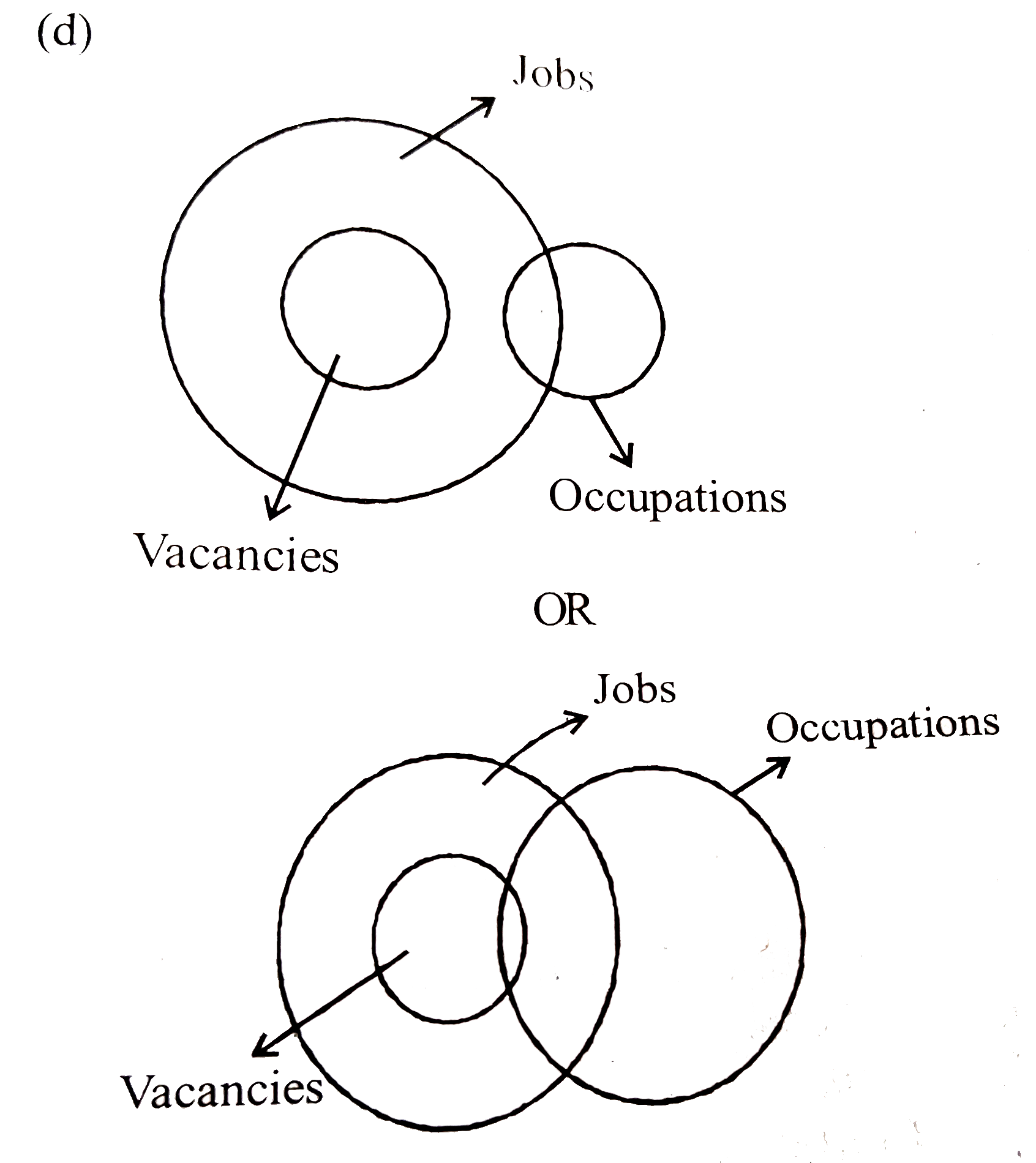 Conclusion I: FALSE II: False |
|
| 1071. |
Statement : A severe cyclonic storm hit the Eastern coastline last month resulting in huge loss of life and property on the entire east coast and the Government had to disburse a considerable amount for relief activities through the district administration machineries. Which of the following may possibly bea follow up measure to be taken up by the Government? |
|
Answer» The Government may set up a task force to REVIEW the post relief scenario in all districts and also to confirm proper end user RECEIPT of the relief supplies |
|
| 1072. |
There are six family members P,Q , R S T and U and all of them are different age . P is younger than only one person . T is older than Q and S but not older than P.S is older than only one person . U is youngest in the family . The age of S is 25 year and the age of person who is second oldest is 40 yearWhat is the possible age of Q? |
|
Answer» 43 year `R GT p gt T gt Q gt S gt U` |
|
| 1073. |
There are six family members P,Q , R S T and U and all of them are different age . P is younger than only one person . T is older than Q and S but not older than P.S is older than only one person . U is youngest in the family . The age of S is 25 year and the age of person who is second oldest is 40 yearWho is oldest in the family? |
|
Answer» P `R GT p gt T gt Q gt S gt U` |
|
| 1074. |
12 friends are sitting in 2 parallel rows containing 6 persons each, in such a way that there is an equal distance between the adjacentpersons. In row 1 P,Q,R,S,T and U and all of them are facing south. In row 2 J, K, L, M, N and O are facing North. M is sitting 3^(rd) to the left of J. N is facing R. P is sitting 3^(rd) to the right of T. Q is facing J and sitting at one end of the row. U is sitting second to the right of T. K is facing S and he is not sitting in the middle position of the row. The person facing T is second to the right of M. L is not facing T and he is not sitting on the immediate left of J. Who are the immediate neighbour of U ? |
|
Answer» <P>P,R 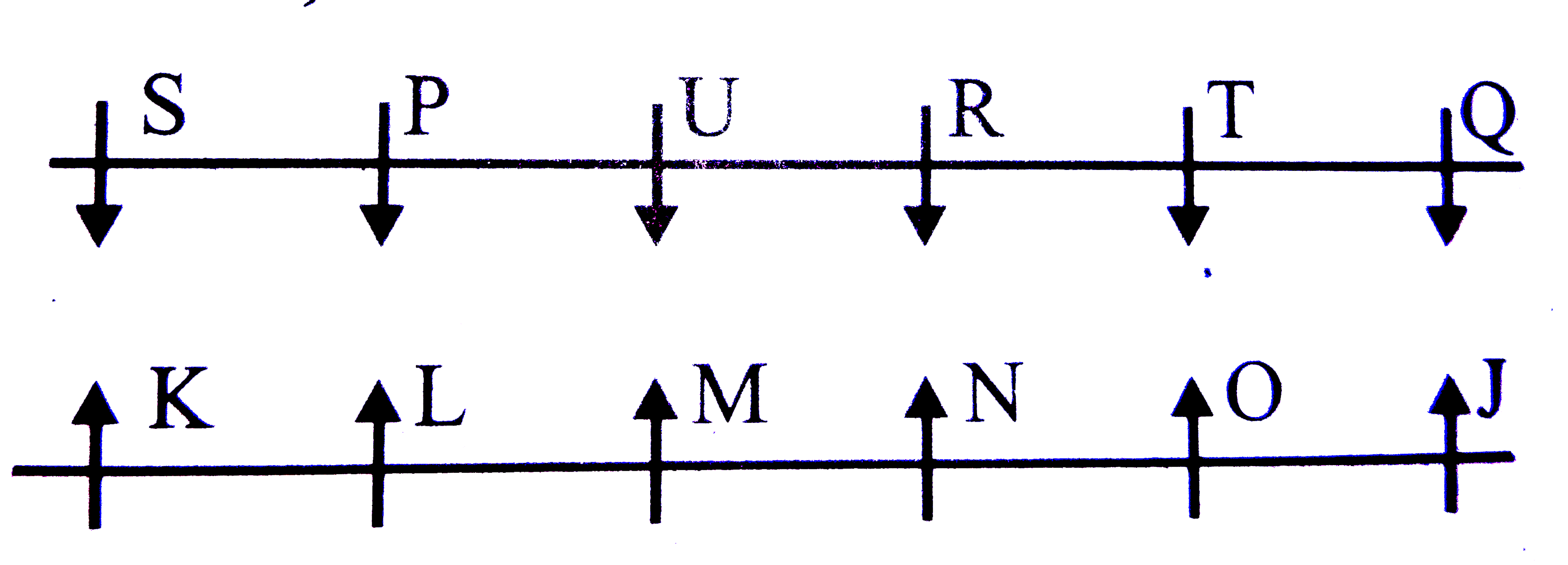
|
|
| 1075. |
Eight people - J, K, L, M, N, O, P and Q are sitting around a circular table facing the centre, not necessarily in the same order. O is sitting third to the right of M. There is only one person sitting between M And J. There are only three people between J and K. P is an immediate neighbour of J. There are only three people between P and L. N is second to the right of P. What is N's position which respect to K ? |
|
Answer» Second to the left 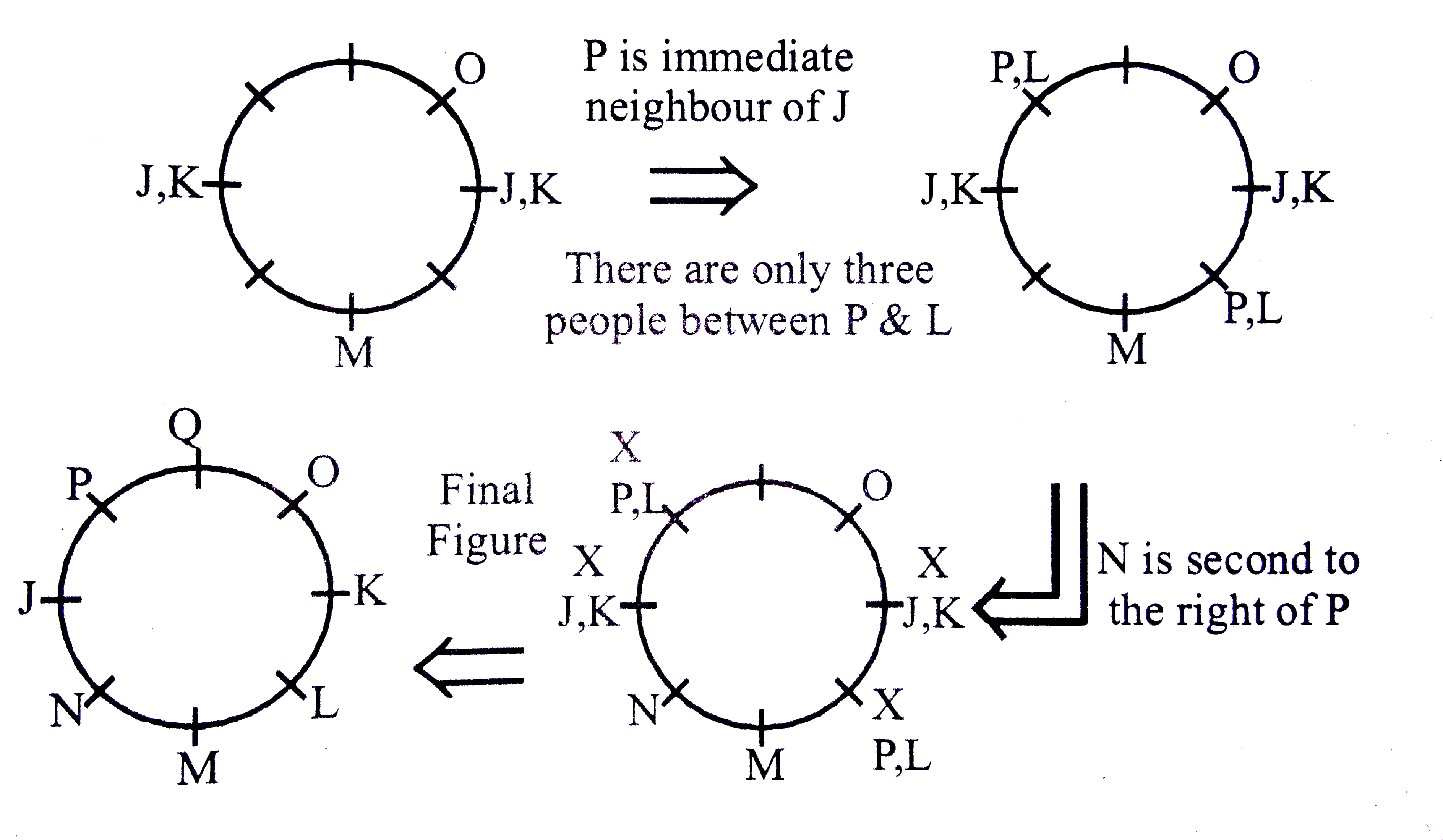 Third to the left |
|
| 1076. |
Eight people - J, K, L, M, N, O, P and Q are sitting around a circular table facing the centre, not necessarily in the same order. O is sitting third to the right of M. There is only one person sitting between M And J. There are only three people between J and K. P is an immediate neighbour of J. There are only three people between P and L. N is second to the right of P. How many people are sitting between K and P when counted from the right side of K ? |
|
Answer» One 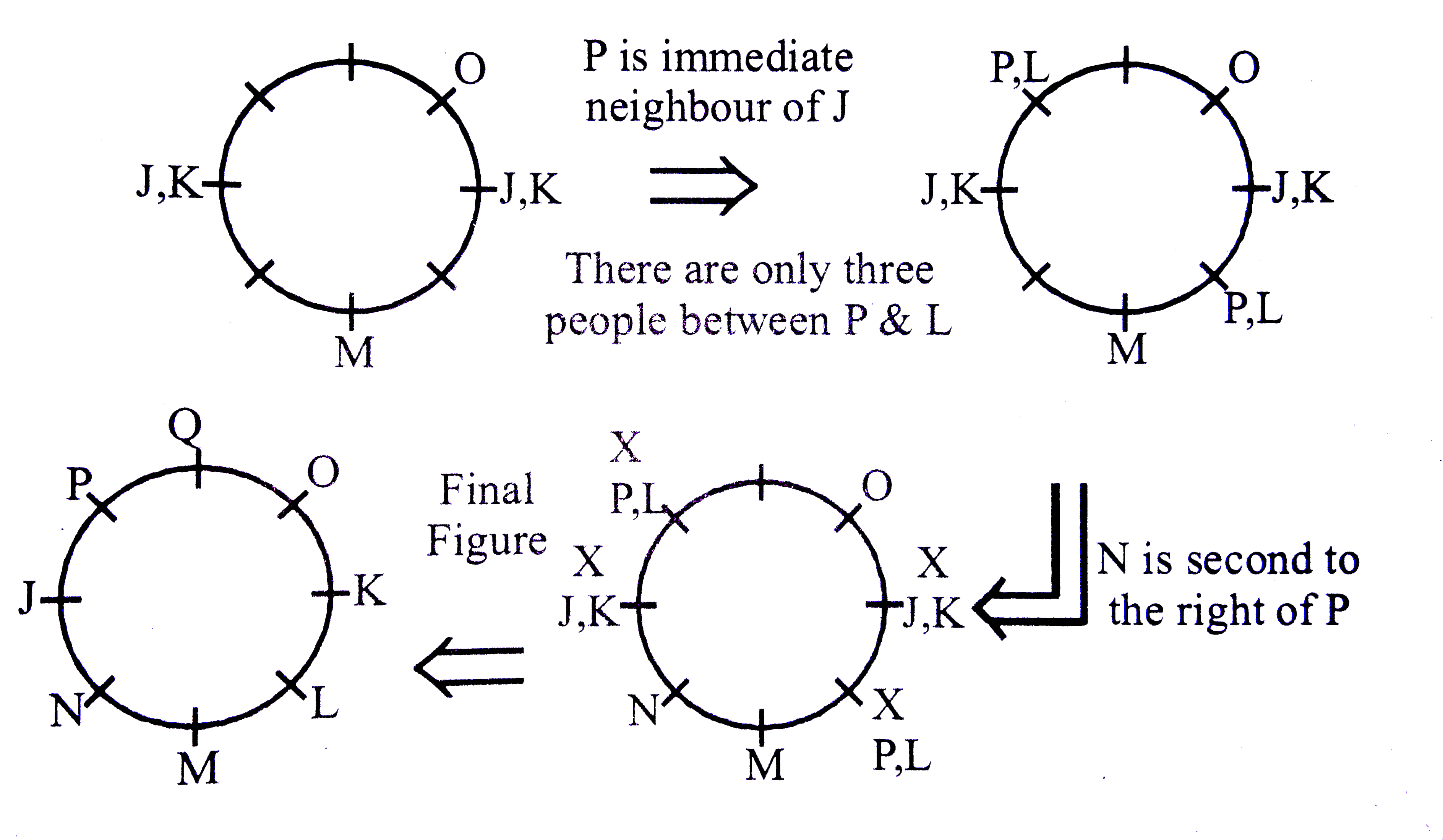 Only two persons are sitting i.e. 'O' and 'Q' |
|
| 1077. |
Eight people - J, K, L, M, N, O, P and Q are sitting around a circular table facing the centre, not necessarily in the same order. O is sitting third to the right of M. There is only one person sitting between M And J. There are only three people between J and K. P is an immediate neighbour of J. There are only three people between P and L. N is second to the right of P. Who is sitting second to the left of the one who is sitting second to left ofQ ? |
|
Answer» M 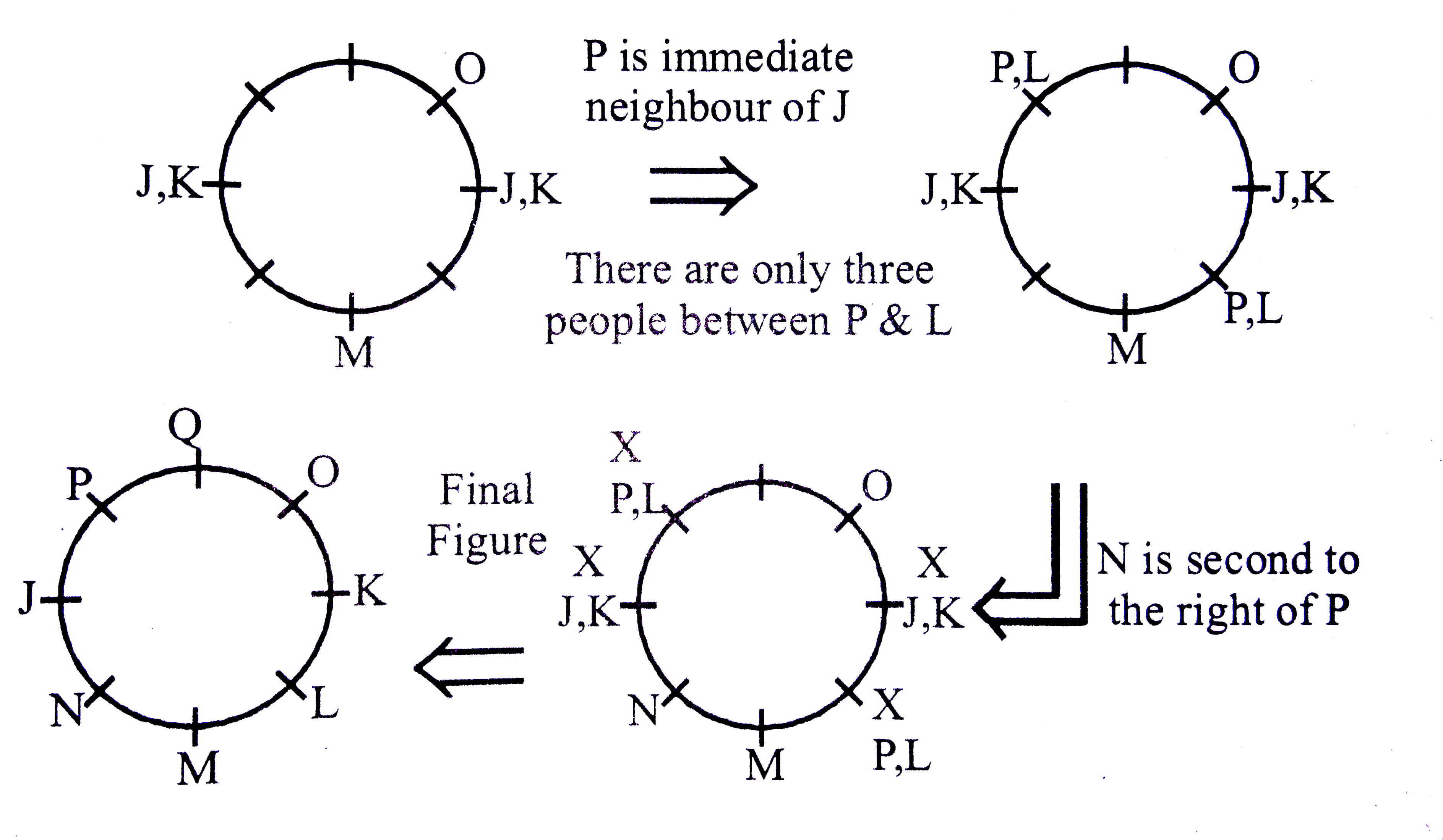 'K' is SECOND to the LEFT of 'Q' and 'M' is second to the left of 'K' |
|
| 1078. |
Eight people - J, K, L, M, N, O, P and Q are sitting around a circular table facing the centre, not necessarily in the same order. O is sitting third to the right of M. There is only one person sitting between M And J. There are only three people between J and K. P is an immediate neighbour of J. There are only three people between P and L. N is second to the right of P. 'Four of the following five are alike in a certain way based on their seating positions in the above arrangement and so form a group . Which one does not belong to the group ? |
Answer» Solution :FORMATION of fig ACCORDING to information given 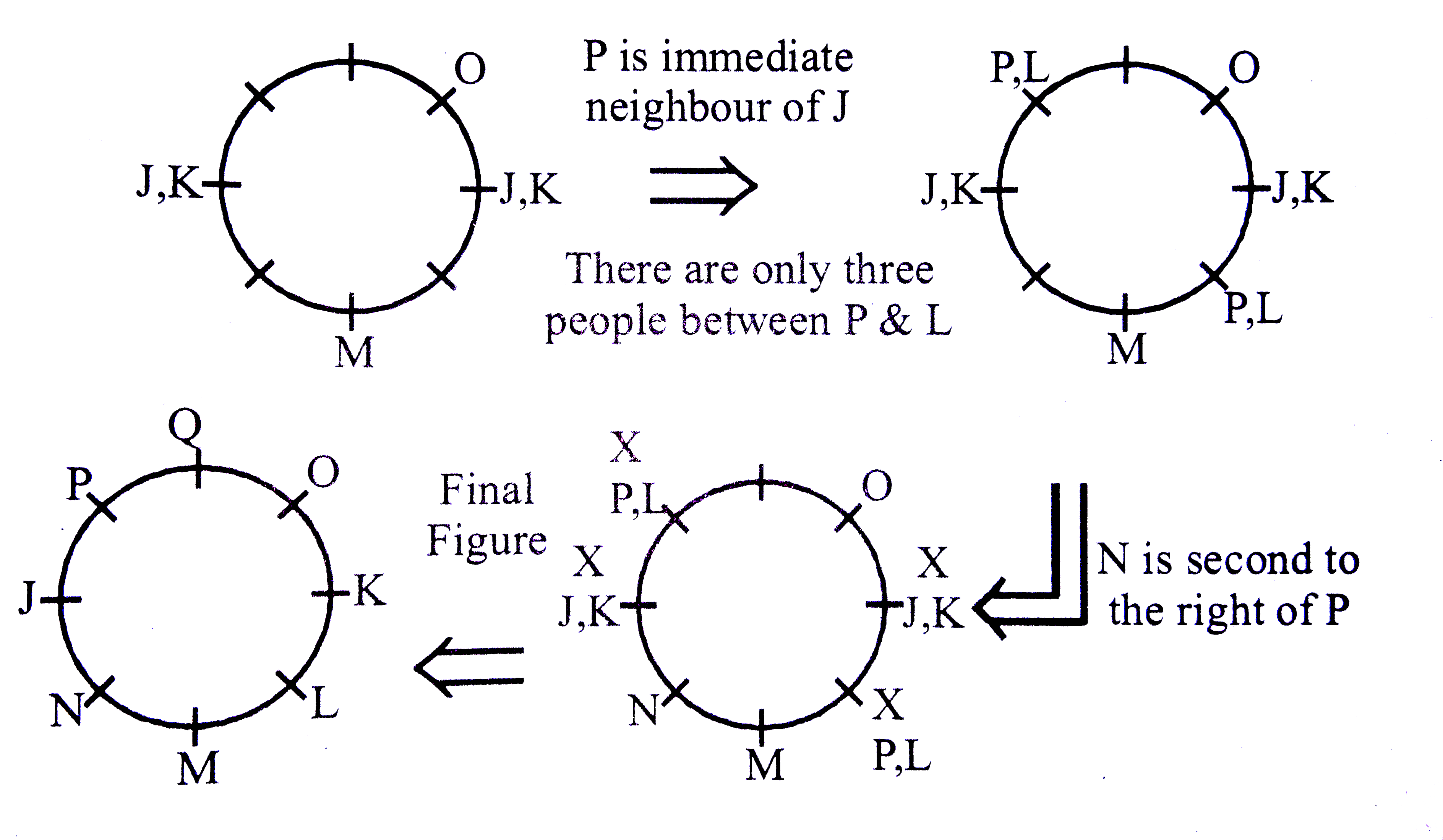 PQ, KL, MN, QO are in clockwise way and KO in anticlockwise way |
|
| 1079. |
Eight people - J, K, L, M, N, O, P and Q are sitting around a circular table facing the centre, not necessarily in the same order. O is sitting third to the right of M. There is only one person sitting between M And J. There are only three people between J and K. P is an immediate neighbour of J. There are only three people between P and L. N is second to the right of P. Which of the following is true regarding the given arrangement ? |
|
Answer» M is an immediate neighbour of K 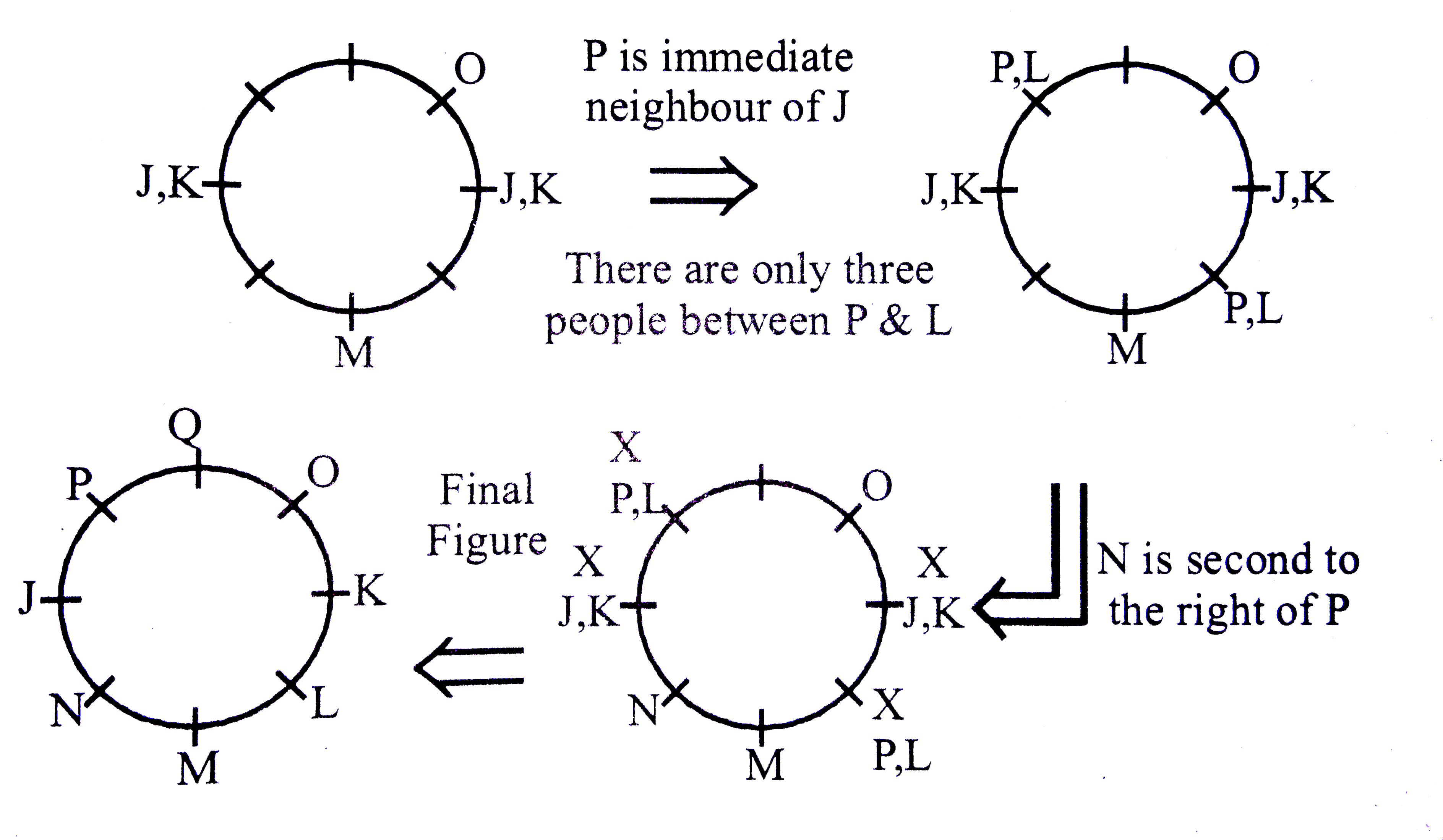 N is immediate neighbour of J |
|
| 1080. |
Statement: Despite strong opposition, the controversial Prohibition of Forcible Conversion of Religion Bill was passed by the Tamil Naidu Assembly with the AIDMK and the BJP outvoting the combined opposition of the DMK, the Congress, the TMC and the Left parties. -A news. Assumptions: I. Conversion creates resentment among several sections and also inflames religious passions, leading to communal clashes. II. Conversions only lead to the isolation of the converted. II. Strong opposition has puts hindrance before a bill in taking final shape. |
|
Answer» All I, II & III |
|
| 1081. |
FITAZQTOPRCBSET (The new words formed after performing the mentioned operations may not necessarily be a meaningful English word). How many letters are there in the English alphabetical series between the first letter of the word which is second from the left end and the second letter of the word which is third from the right end? |
|
Answer» 11 HENCE, there are 13 LETTERS between A and O. |
|
| 1082. |
FITAZQTOPRCBSET (The new words formed after performing the mentioned operations may not necessarily be a meaningful English word). If in each of the word given, the second alphabet is replaced by its following alphabet and third alphabet is replaced by its preceding alphabet as per the English alphabetical order, then how many words thus formed will be without any vowels? |
| Answer» SOLUTION :`{:("FITAZQTOPRCBSET"),("FJSAAPTPORDASFS"):}` | |
| 1083. |
FITAZQTOPRCBSET (The new words formed after performing the mentioned operations may not necessarily be a meaningful English word). If the given words are arranged in the order as they appear in a dictionary from right to left, which of the following will be second from the left end? |
| Answer» Solution :`{:("FITAZQTOPRCBSET"),("TOPSETRCBFITAZQ"):}` | |
| 1084. |
FITAZQTOPRCBSET (The new words formed after performing the mentioned operations may not necessarily be a meaningful English word). If in each of the given words, every consonant is changed to its previous letter and every vowel is changed to its next letter accroding to the English alphabetical series, then in how many words, thus formed, at least one vowels will appear? |
| Answer» SOLUTION :`{:("FITAZQTOPRCBSET"),("EJSBYPSPOQBARFS"):}` | |
| 1085. |
How many pair of digits have same number of digits between them in the number "462703158" as in the numeric series? |
Answer» SOLUTION :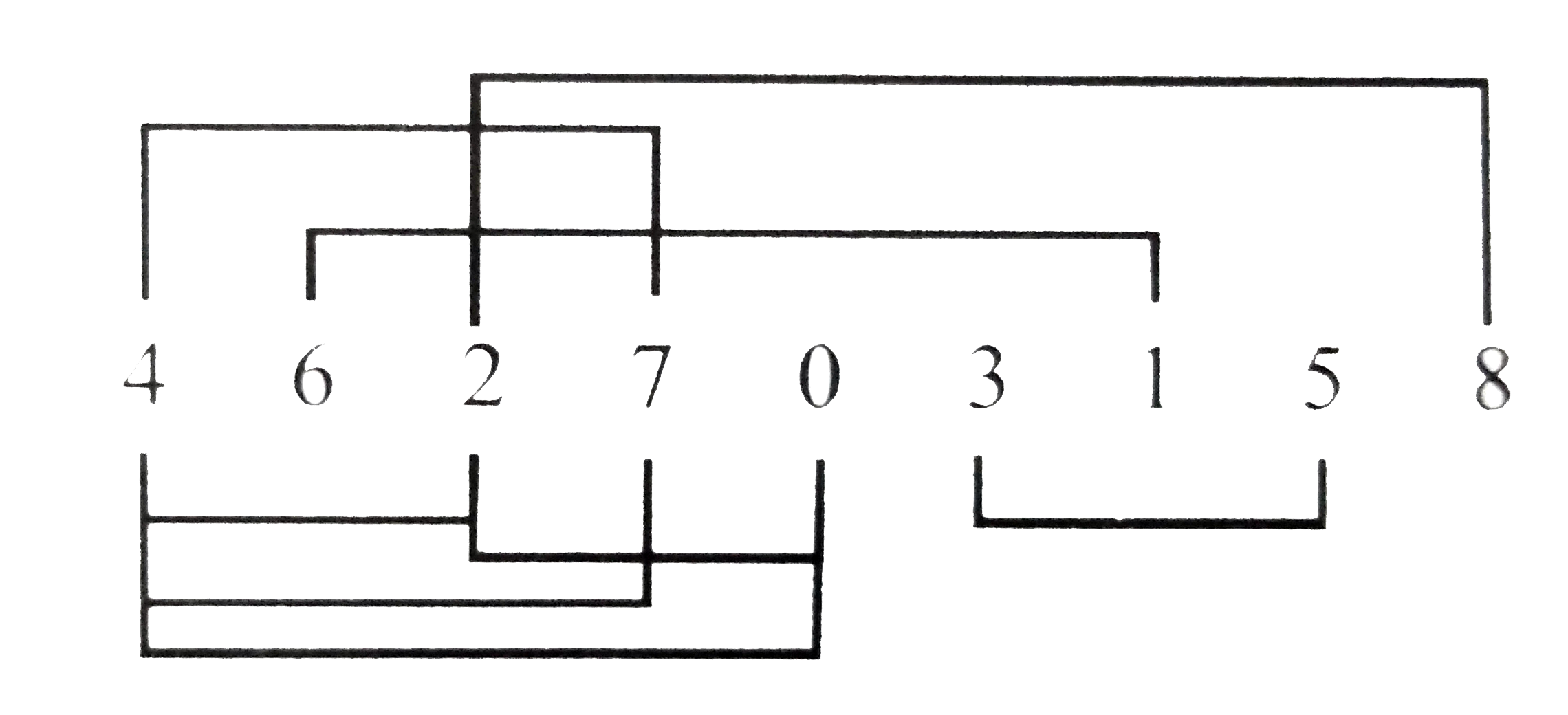
|
|
| 1086. |
FITAZQTOPRCBSET (The new words formed after performing the mentioned operations may not necessarily be a meaningful English word). If the positions of the first and the third alphabet in each of the words given are interchanged, then how many meaningful word will be formed? |
| Answer» SOLUTION :`{:("FITAZQTOPRCBSET"),("TIFQZAPOTBCRTES"):}` | |
| 1087. |
Statements : Some pigenos are parrots All parrots are owls No Owls is an eagle Conclusions: I. All parrots being pigeons is a possibility II. If some parrots are pigeons then their being eagles is a possibility |
|
Answer» If only conclusion I follows  So, Both CONCLUSIONS I and II follow. |
|
| 1088. |
Statement : Discount offers provided by organised retailchains are increasingly eating into the small retailers' pic, thus creating a problem for manufacturers in spite of thehype around the retail boom. Courses of action : I. An effort should be made to dissuade customers from purchasing the prodcuts on discounts. II. All such manufactures should stop supplying products to organised retail chain. III. Effort should be made by the manufactures for commercial dialogues with the retail chain. |
|
Answer» Only I and II |
|
| 1089. |
Statement : Should all the electricity state boards be privatized in india ? Arguments I. No this will increases the grievances of the people. II. Yes, it will check the growing menace of power theft which has resulted in annual pilferage of a huge amount |
|
Answer» |
|
| 1090. |
Read the following information carefully and answer the given question: Many manufacturing companies are now shifting base to the rural areas of the country as there is a scarcity of space in urban areas. Analysis say that this shift will not have a huge impact on the pricesof the productsmanufacutured by these companies as only about 30% consumers live in urban areas. Which of the following may be consequence of the given information? |
|
Answer» The prices of such products will decrease drastically in the URBAN areas |
|
| 1091. |
If CAB is coded as 6 and BED is coded as 40,then how will HAD be coded as? |
|
Answer» CBA |
|
| 1092. |
Statements: V ge K gt M=N,MgtS,T ltK Conclusions: I. T ltN II. V=S |
|
Answer» if only concluision I follows. `VgeK gtM=NgtS` `thereforeK gt T or N` CONCLUSIONS I. `T LT N:` Not TRUE II. `V=S:` Not true |
|
| 1093. |
Statements: Some trains are buses II. Some cars are truckes III some boats are buses. IV some boats are trains Conclusions : I. Some trucks are trains II. Some cars are trucks III some boats are buses IV Some boats are trains |
|
Answer» None FOLLOWS 
|
|
| 1094. |
Statements: Some gears are wheels All wheels are brakes Conclusions: I. No brake is gear II. Atlest some gears are brakers. |
|
Answer» If only conclusion I follows 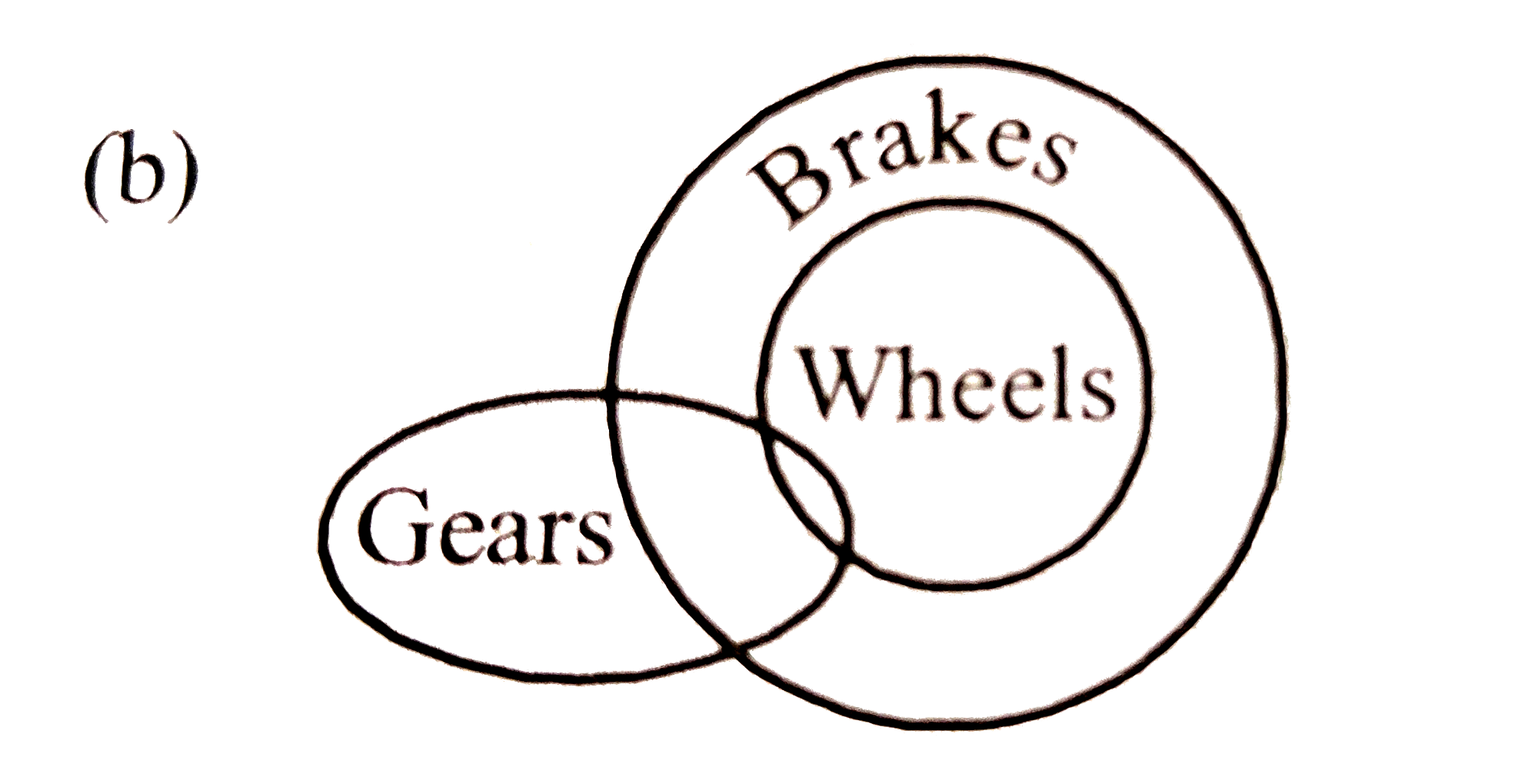 Conclusion I: FALSE II. TRUE |
|
| 1095. |
Six person A,B,C,D,E,F are born in six different years 1946, 1958,1963,1971,1994,2006. All of them like different colours blue, black,green , pink, white, Cyan Note: All the calculations of the ages are to be done on the basis of year 2019 The sum of the ages of D and the one who likes black colour is 86. The one who likes pink colour was born in an even numbered year. D does not like blue colour. The one who likes pink colour is older than th one who likes black colour. D does not like pink colour. B is older than the one who like pink colour. E likes green and was born in an odd numbered year. the sum of the ages of A and the one who like Cyan colour is 81. F is younger than the one who likes green colour. C does not like Cyan colour. How many persons born after F ? |
Answer» SOLUTION :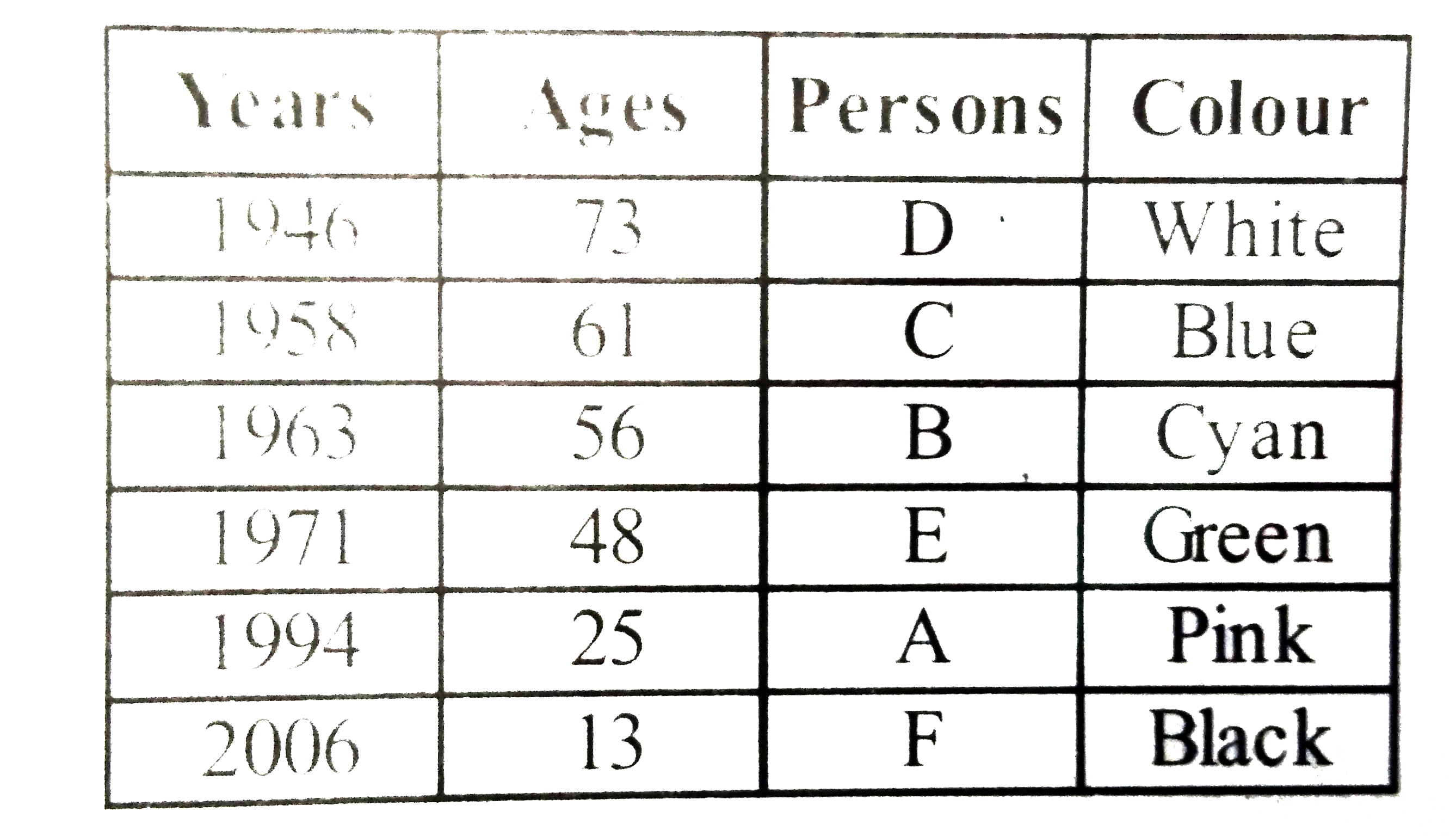
|
|
| 1096. |
Six person A,B,C,D,E,F are born in six different years 1946, 1958,1963,1971,1994,2006. All of them like different colours blue, black,green , pink, white, Cyan Note: All the calculations of the ages are to be done on the basis of year 2019 The sum of the ages of D and the one who likes black colour is 86. The one who likes pink colour was born in an even numbered year. D does not like blue colour. The one who likes pink colour is older than th one who likes black colour. D does not like pink colour. B is older than the one who like pink colour. E likes green and was born in an odd numbered year. the sum of the ages of A and the one who like Cyan colour is 81. F is younger than the one who likes green colour. C does not like Cyan colour. who among the following likes blue colour ? |
Answer» SOLUTION :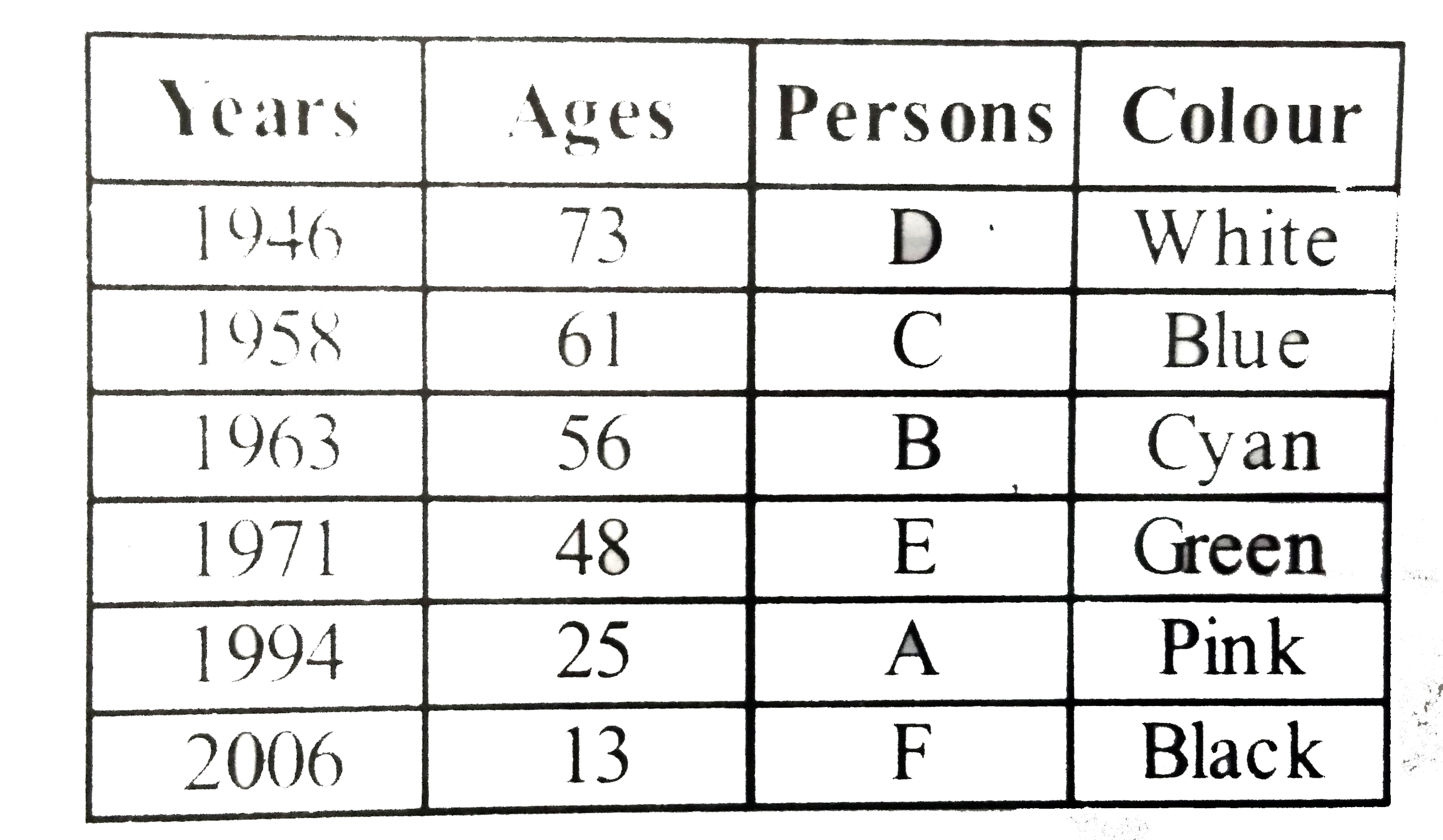
|
|
| 1097. |
Six person A,B,C,D,E,F are born in six different years1946,1958,1963,1971,1994,2006. All of them like different colours blue, black, green, pink, white, Cyan Note: All the calculations of the ages are to be done on the basis of year 2019 The sum of the ages of D and the one who likes black colour is 86. The one who likes pink colour was born in an even numbered year. D does not like blue colour. The one who likes pink colour is older than th one who likes black colour. D does not like pink colour. B is older than the one who like pink colour. E likes green and was born in an odd numbered year. the sum of the ages of A and the one who like Cyan colour is 81. F is younger than the one who likes green colour. C does not like Cyan colour. Which of the following statement is not correct regarding B ? |
|
Answer» B is younger than D 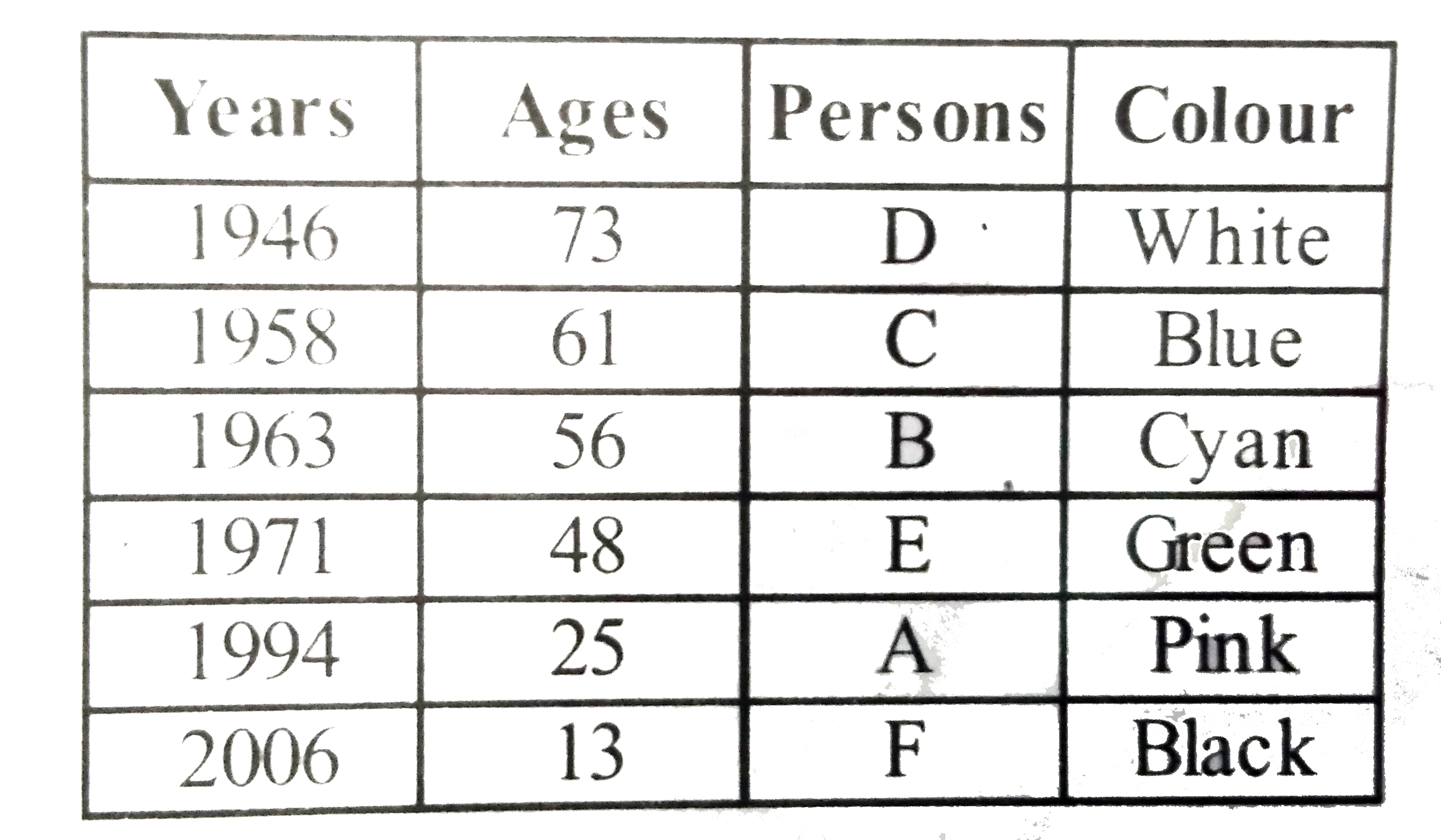
|
|
| 1098. |
Six person A,B,C,D,E,F are born in six different years 1946, 1958,1963,1971,1994,2006. All of them like different colours blue, black,green , pink, white, Cyan Note: All the calculations of the ages are to be done on the basis of year 2019 The sum of the ages of D and the one who likes black colour is 86. The one who likes pink colour was born in an even numbered year. D does not like blue colour. The one who likes pink colour is older than th one who likes black colour. D does not like pink colour. B is older than the one who like pink colour. E likes green and was born in an odd numbered year. the sum of the ages of A and the one who like Cyan colour is 81. F is younger than the one who likes green colour. C does not like Cyan colour. In which of the following year A was born ? |
|
Answer» 1994 
|
|
| 1099. |
All German philosophers, except for Marx, are idealists. From which of the following can the statement above be most properly inferred? |
|
Answer» Except for Marx, if someone is an IDEALIST, then he or she is a philosopher, as LONG as he GERMAN |
|
| 1100. |
Statements: Some colours are paints All colours are varnishes No varnish is dye. Conclusions: I. Some varnishes are paints II. No dye is colour. |
|
Answer» If only conclusion I follows 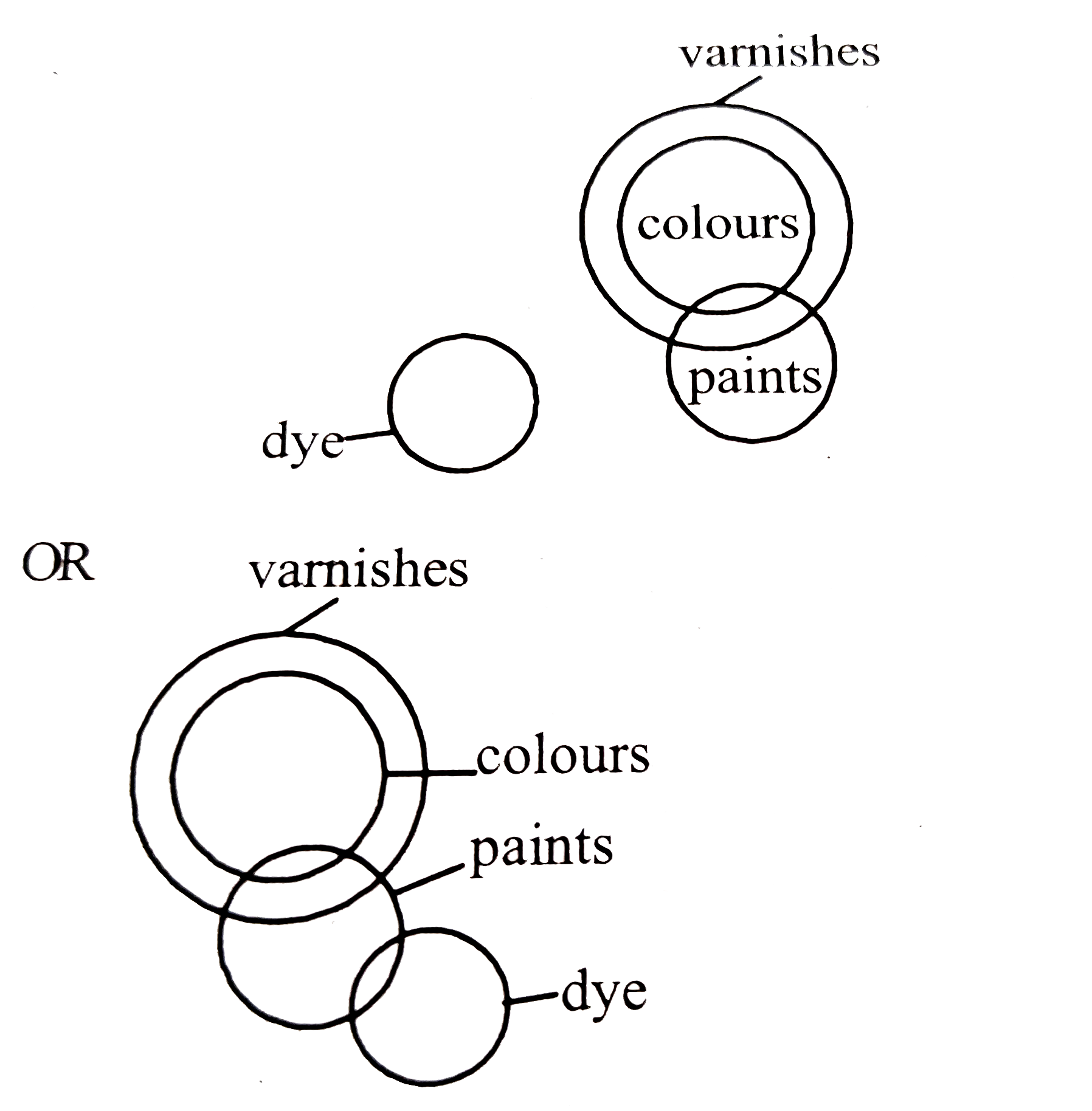 Conclusion I. TRUE II True So both the conclusion follow |
|